| Columns Retired Columns & Blogs |
I've loved my Monsoon desktop speakers for years. Glad to see them getting some upscale cred!
I used DRA Labs' MLSSA system and a calibrated DPA 4006 microphone to measure the Dragonfire Mini Dragon Satellite's frequency response in the farfield, and an Earthworks QTC-40 mike for the nearfield responses of that and the SB-8P powered subwoofer. I measured the performance of the Dragonfire MD-4 power amplifier with my Audio Precision SYS2722 system (see the January 2008 "As We See It"). Because the MD-4 uses a class-D output stage, around 320mV of ultrasonic switching noise was present on its outputs. As this noise might overload the SYS2722's input circuitry, I used the Audio Precision auxiliary AUX-0025 passive high-power filter, which eliminates noise above 200kHz, for the amplifier testing.
Although Dragonfire recommends that purchasers of the Mini Dragon Satellites use them with their MD-4 amplifier, which is how they were auditioned by Jason Victor Serinus, the manual states "As an ultra-efficient purely resistive load, the Mini Dragons require only a few watts of power to reach normal listening levels and may be driven by a wide variety of high-end amplifiers." I therefore performed the first round of testing using one of the Mini Dragon speakers driven by the Krell KSA-50 amplifier I routinely use for Stereophile's speaker testing.
The Mini Dragon speaker is indeed close to being a "purely resistive load," though at 8 ohms (fig.1, solid trace), our sample's impedance was nowhere close to the specified 20 ohms. On the other hand, my estimate of the Mini Dragon's basic sensitivity of 103.5dB(B)/2.83V/m was even higher than the specification (in the upper midrange) of 100dB/w/m. However, as the Mini Dragon speaker's frequency response when driven by the Krell reveals, this extraordinarily high sensitivity is achieved by the loudspeaker having a rise in its response of more than 15dB in the top octaves (fig.2). This behavior might be worse than it looks, due to the Mini Dragon speaker becoming extremely directional in the same region (see later). If you use this loudspeaker with a regular amplifier, you can drastically reduce the amount of high treble by experimenting with the toe-in.
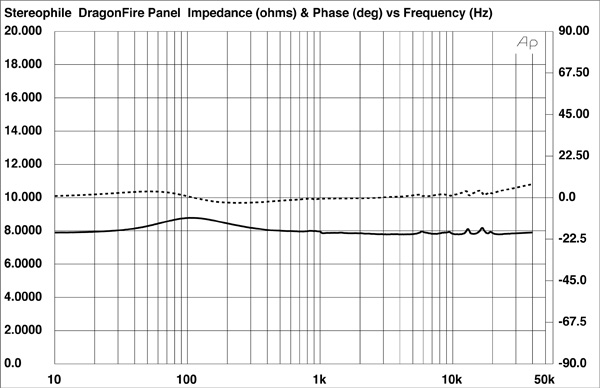
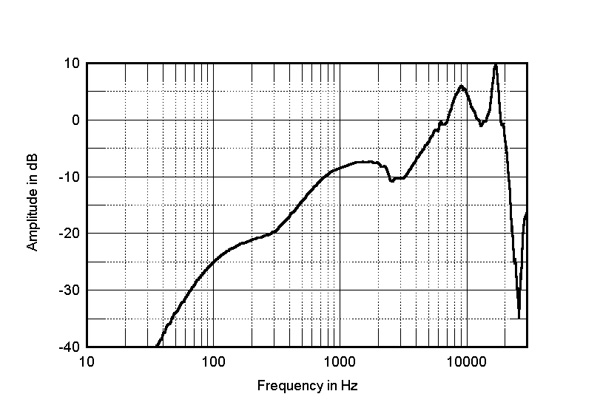
The balanced analog XLR jacks had an appropriately high input impedance of 10k ohms from 20Hz to 20kHz but a low voltage gain into 8 ohms of 6.34dB at 1kHz (see later). The output impedance was very low at 200Hz and 1kHz, at 0.09 ohms, but rose to 0.3 ohms at 20kHz. With the Audio Precision filter, the unweighted, wideband S/N ratio, ref. 2.83V into 8 ohms and measured with the analog input shorted to ground, was a modest 72.7dB. An A-weighting filter improved the ratio to 81.8dB. A 1kHz digital signal at 0dBFS resulted in an output level of 6.01V into 8 ohms, at the CH3–4 jack. This level is equivalent to 4.5W into 8 ohms, which is therefore the maximum power at 1kHz that the amplifier will be able to deliver to the Mini Dragon speakers (see later).
The MD-4's impulse response with 44.1kHz digital data (fig.3), measured at the loudspeaker output, indicates that the amplifier inverts absolute polarity. (I had connected the supplied loudspeaker cables as recommended in the manual, with the white lead positive and the black lead negative. The analog inputs also invert polarity using the dedicated Dragonfire Speakon–mini-XLR cables.) Fig.3 shows that the MD-4's reconstruction filter is a conventional linear-phase type, with time-symmetrical ringing to either side of the single sample at 0dBFS. However, the complex shape of the impulse is due to the amplifier's digital signal processing. The effect of the DSP can be seen with 44.1kHz-sampled white noise (fig.4 red and magenta traces). While the MD-4's response rolls off extremely sharply above 20kHz, reaching full stop-band suppression at 25kHz, a little above half the sample rate (vertical green line), a considerable amount of frequency shaping can be seen in the audioband. The aliased image at 25kHz of a full-scale tone at 19.1kHz (blue and cyan traces) is completely suppressed, and the harmonics of this tone are all very low in level.
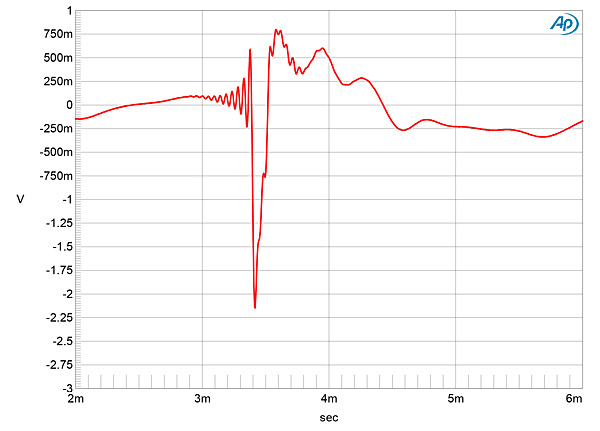
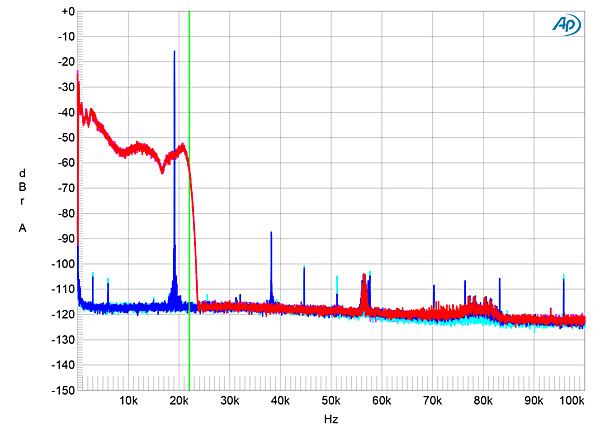
With the MD-4's aggressive use of DSP and a class-D output stage, I wasn't surprised that when I changed the bit depth of the incoming data from 16 to 24 with a dithered tone at –90dBFS, the noise floor didn't drop in level (fig.5), even though the Audio Precision low-pass filter was in-circuit. With an undithered tone at –90.31dBFS (fig.6), the three DC voltage levels were obscured by high-frequency random noise. When I tested the MD-4's rejection of word-clock jitter with 16-bit data, the odd-order harmonics of the LSB-level, low-frequency squarewave, which lie between –124dBFS and –128dBFS, were all buried beneath the analog noise floor (fig.7). These results imply that the amplifier's practical resolution is limited to around 14 bits.
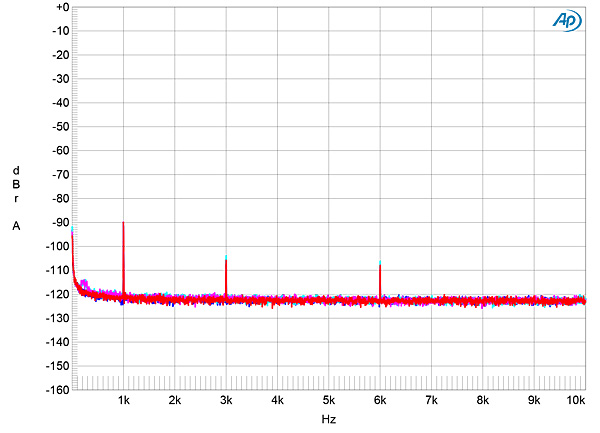
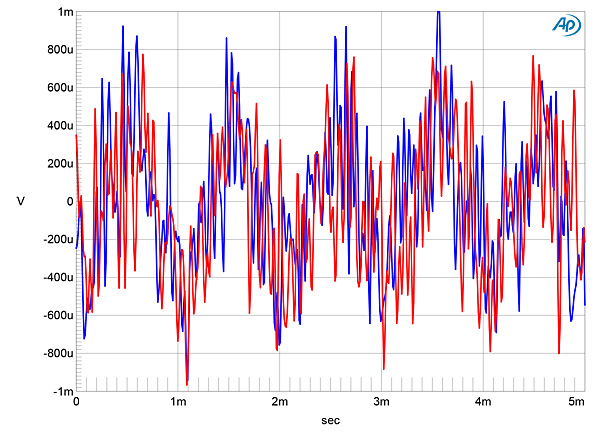
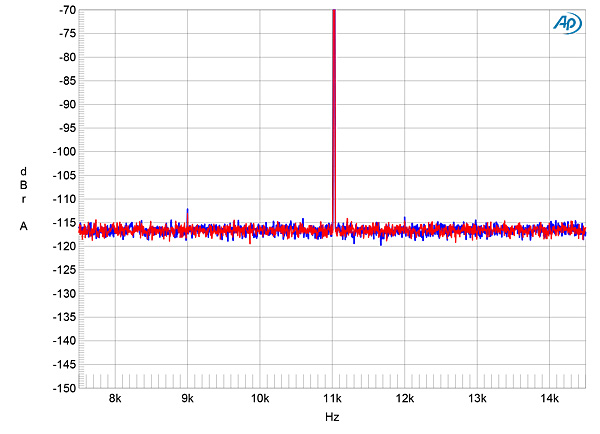
The blue and red traces in fig.8 show the frequency response of the MD-4's satellite outputs and show in more detail the response shaping seen in fig.4. The peak at 16.375kHz seen in fig.2 is notched out and the upward slope with frequency of the trace in fig.2 is compensated for. There is a rise in response in the lower midrange to compensate for the small panel's dipole cancellation, and the output then drops rapidly below 200Hz. The green and gray traces in this graph show the output of the MD-4's subwoofer output. It is aggressively rolled off above 200Hz, which is why Dragonfire instructs users of the matching SB-8P subwoofer to set its rear-panel switch to "LFE." An LFE signal is already high-pass–filtered, so setting the SB-8P to "Sub," which might be thought intuitive, is incorrect as this will apply two filters. Note that several small peaks and dips overlay the traces in fig.8. I assume these are due to Dragonfire's adjustments of the MD-4's parametric equalizers for JVS's placement of the satellites and subwoofer.
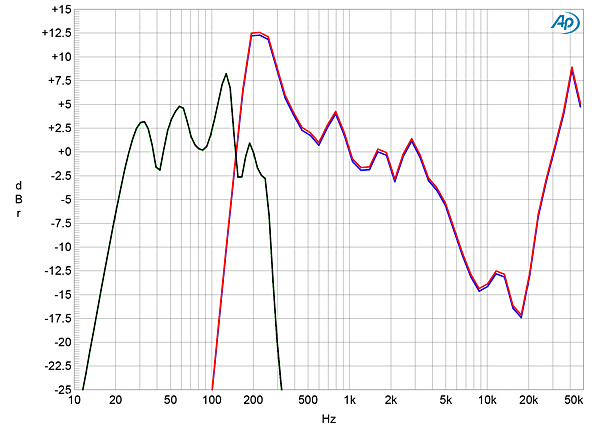
Fig.9 shows the MD-4's reproduction of a 1kHz squarewave. It is overlaid with the linear-phase ringing of the amplifier's antialiasing filter. Dragonfire rates the MD-4's maximum power as 245Wpc into 8 ohms (23.9dBW). Remember, however, that I calculated the amplifier's maximum power with a full-scale digital signal at 1kHz as just 4.5W (6.5dBW). With both analog input channels driven at 1kHz and with clipping defined as when the THD+noise in the output reaches 1%, I measured the apparent clipping power into 8 ohms as 4.8Wpc (6.8dBW, fig.10). However, repeating the measurements with a 300Hz signal gave an apparent clipping power of 35W into 8 ohms (15.45dBW, fig.11).
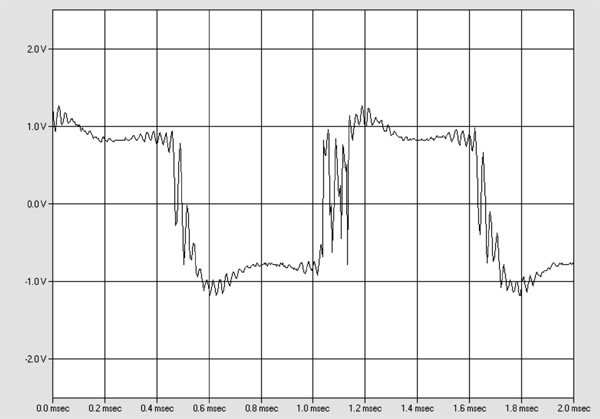
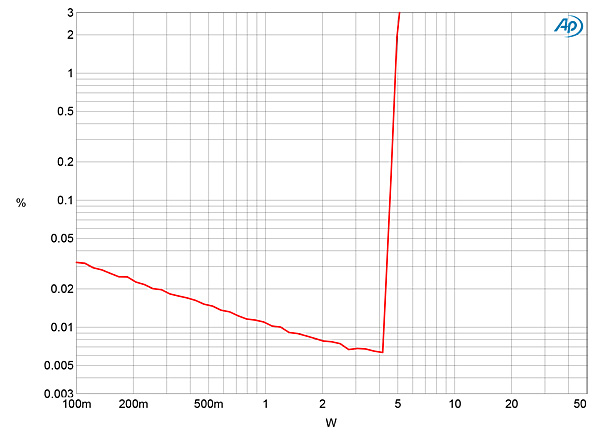
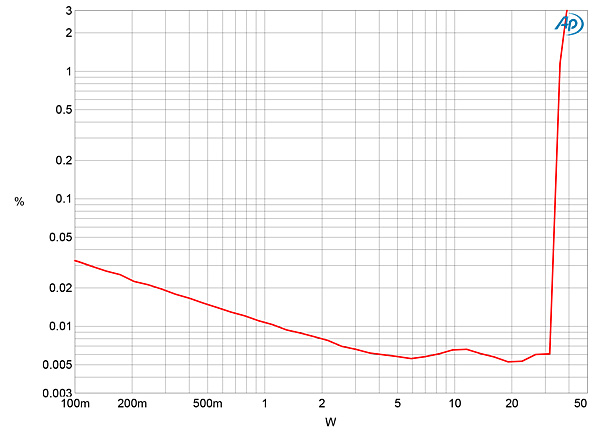
A moment's reflection made it obvious that these two graphs are not showing the powers at these two frequencies at which the MD-4 clips. Instead, if you look at the response shaping in fig.8, it becomes clear that the 1% THD+N point in both graphs is reached when the input signal is 3V. This is therefore the input voltage at which the MD-4's analog/digital converter overloads, not when the amplifier runs out of power. Some D/A processors and disc players have balanced outputs that offer maximum levels greater than 3V, so it will probably be best to use the MD-4's digital inputs to avoid distortion with those sources. Overall, the MD-4 offers commendably low levels of distortion, which is primarily third-harmonic in nature (fig.12).
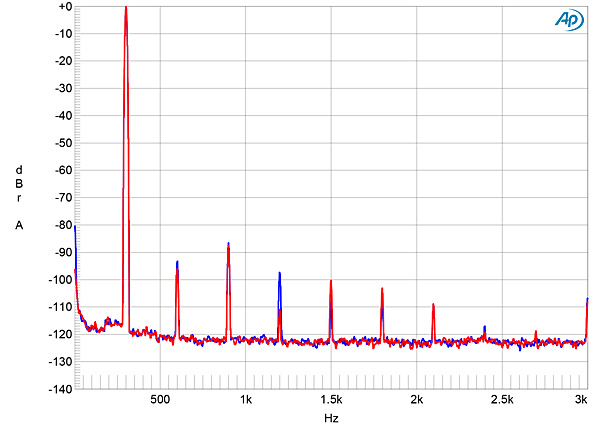
Returning to the Mini Dragon Satellite, with the speaker now driven by the MD-4, the equalization has reduced the sensitivity to around 83dB(B). Even with the limited amount of power on tap, the Mini Dragon should provide sufficiently satisfying listening levels on a desktop, though, as JVS noted, "it is not a rock-the-joint party animal whose volume can be cranked up anywhere near floor-shaking levels."
The Dragonfire's farfield response driven by the MD-4, averaged across a 30° horizontal window centered on the central axis, is shown as the black trace above 300Hz in fig.13. It is flat on average up to 10kHz, with various small peaks and dips evident. The nearfield response is plotted below 400Hz; it rolls off rapidly below 200Hz. The nearfield output of the Dragonfire SB-8P subwoofer's drive-unit is shown as the green trace in fig.13, that of the passive radiator as the blue trace, and their complex sum as the red trace. The subwoofer was set to "Sub" and the crossover to its highest frequency, "160Hz," for these measurements, as I wanted to examine the SB-8P's intrinsic behavior without the MD-4's equalization being applied. The subwoofer usefully extends the Mini Dragon's response into the midbass region, below which it quickly rolls out.
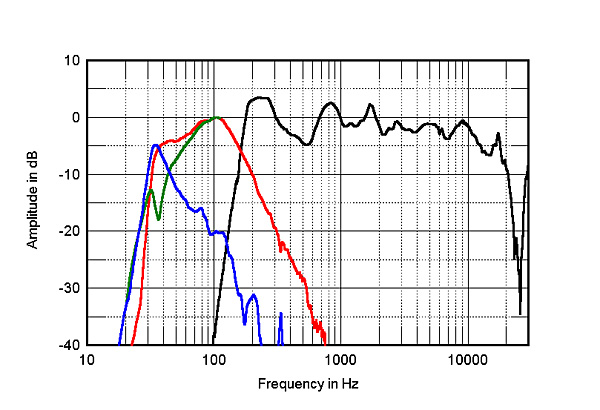
When I plotted the Mini Dragon speaker's horizontal dispersion (fig.14), it became apparent that the response shown in fig.11 does not accurately indicate the Dragonfire satellite's behavior above 10kHz. I have been averaging a loudspeaker's farfield output across a 30° horizontal window for a quarter-century, because the resultant response correlates well with the direct sound balance perceived by the listener. However, the Mini Dragon becomes increasingly directional above 3kHz and the output 15° off-axis above 10kHz is well down in level, which affected the trace shown in fig.13. This graph also reveals the panel's typical figure-eight behavior, with the output 90° to the side down by 30dB compared to the on-axis level. In the vertical plane (fig.15), as the Mini Dragon Satellite is taller than it is wide, the dispersion is even more limited. When it is driven by the MD-4, the Mini Dragon speaker really does need to be listened to on-axis if the balance is not to become too mellow.
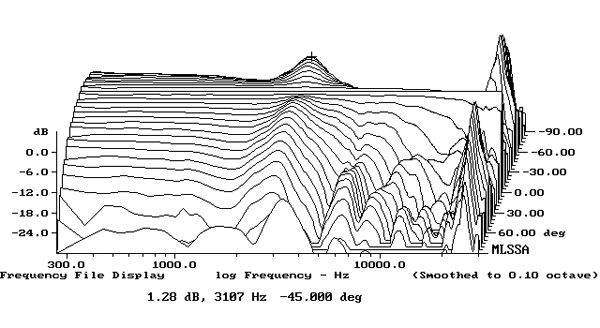
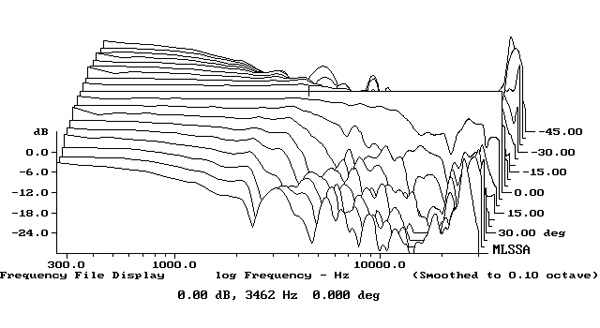
In the time domain, the Mini Dragon's step response (fig.16) indicates that the loudspeaker driven by the MD-4 inverts acoustic polarity. (With it driven by the Krell amplifier, the speaker preserved polarity—ie, was noninverting. In addition, the step arrived at the microphone 0.5ms earlier with the Krell, suggesting that this is the latency of the MD-4's DSP.) The decay of the loudspeaker's step is overlaid with some undulations with a period around 1ms. These undulations correlate with a ridge of delayed energy at 1kHz in the Mini Dragon's cumulative spectral-decay plot (fig.17), and there is a stronger ridge present at 1687Hz. Both these ridges coincide with small peaks in the loudspeaker's on-axis response. Though JVS didn't comment on noticeable coloration—he found the speaker's midrange to sound very natural—I would have expected this behavior to add a slight nasality to the Mini Dragon's sound. The treble region in this graph is superbly clean, however.
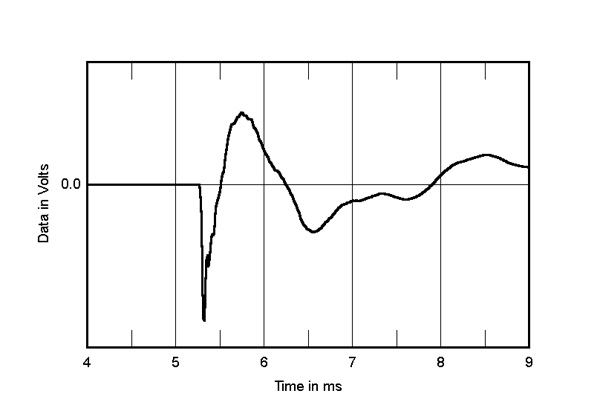
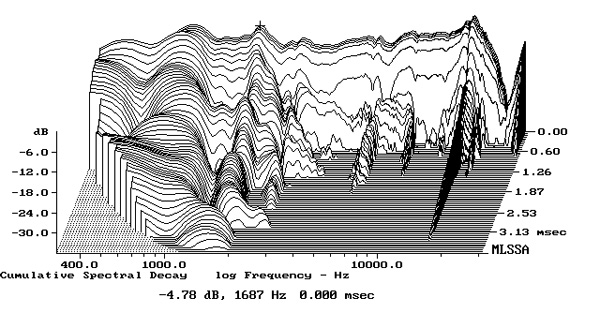
Finally, I didn't measure the performance of the complete system—Mini Dragons driven by the MD-4 with room correction provided by Dirac and the miniDSP SHD Studio preamplifier—as the miniDSP's corrections will only be relevant to JVS's listening position. However, Dirac's target response for that position is shown in fig.18.
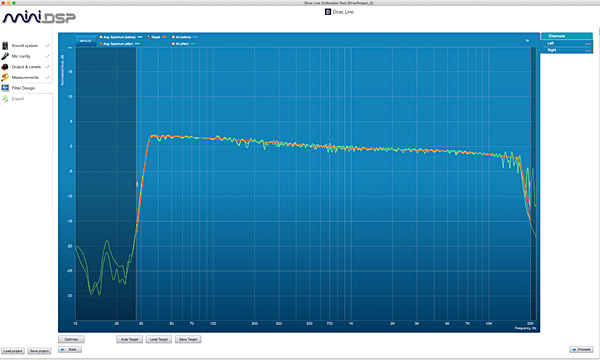
Overall and within the necessary compromises associated with its unique design, the Dragonfire system offers excellent measured performance. However, it will only give of its best when listened to on a desktop.—John Atkinson

I've loved my Monsoon desktop speakers for years. Glad to see them getting some upscale cred!

In the late 1990s I bought a 4-channel variant of Bruce Thigpen's Eminent Technology LFT-11.
http://www.eminent-tech.com/lft11prod.html
http://www.eminent-tech.com/graphics/desktopandruler2.jpg
http://www.eminent-tech.com/graphics/wooferandruler2.jpg

Factoring in technological advancements and inflation, those are 10,000 dollar speakers!
I still use my Monsoons, they are uncannily musical creatures.

... a pair of Wilson Audio TuneTots?
https://www.hifinews.com/content/wilson-audio-tunetot-loudspeaker

According to Hi-Fi News TuneTot measurements ........
There is a nice, approx. 8 db 'BBC dip' in the presence region ........ The frequency response almost looks like a 'roller-coaster' ride .......... The sensivity is somewhat on the low side 83-84 db ......... Distortion levels seem to rise as the frequency decreases ....... Pair matching is also, not that great +/- 5-6 db :-) ........
I saved the best for the last ........ They cost $10,000/pair and they don't come with an amp :-) .........

London celebrates the elegance of Audrey Hepburn. London celebrates the elegance of Audrey Hepburn.
https://fabiosa.com/lbmkt-ctclb-rseln-audkz-pbdlr-sasha-and-masya-shpak-.... In addition to the classic portraits of such famous photographers as Cecil Beaton and Angus McBean for the first time, the early "family pictures are to be seen" to be provided to the gallery by the sons of Hepburn's available.

KEF active, wireless, DSP controlled LS series ........ KEF EGG, LSX, LS-50 wireless and LS-50 wireless Nocturnes are all lot less expensive than Dragonfire :-) .........

They don’t cost enough!

In response to Ortofon's question, would I rather have a pair of Wilson TuneTots.... Every desktop system I've used in Port Townsend and Oakland, starting with AudioEngine 5s, has included self-powered loudspeakers. The Wilson Tune Tots would have to be paired with a different DAC, and would need appropriate amplification that I don't currently have on hand. Oh, and speaker cable as well.
As for comparing the sound of the speakers alone (which is the next question that a reasonable audiophile might ask), they are completely different animals requiring different connections and electronics. They're also designed for different placement. We're not talking apples and oranges; we're talking apples and almonds. Personally, I like them both. The foods, that is. I have only heard the TinyTots once, and have no educated opinion to offer.

May be JVS could review the KEF LS-50 wireless Nocturnes ($2,500/pair)? ........... LS-50 Nocturnes are the top of the line model in the KEF LS wireless series ......... Nocturnes are active, wireless and DSP controlled ........ Nocturnes were not reviewed by Stereophile :-) ........

I think that would be a way cool niche for Jason if it isn't to monotonous for him.

May be not as monotonous as listening to Diana Krall over and over and over and ........ again :-) ........

... supply the amp (and DAC and DSP, if needed) as a complete system or would you prefer having the freedom to select the ancillary components (and cables) yourself?

If and when Wilson Audio comes up with an active, self powered, wireless, DAC and DSP controlled speakers for $50k ....... guaranteed JVS would be the first one in line to review them ...... Of course Nordost would be supplying the necessary cables :-) ..........

... for a new Wilson product code named '4D'.
It will be an active model, with the speaker designed by Daryl (Wilson), the amplifier from Dan D'Agostino, the DAC from dCS and the DSP from Dirac.

.... and the power supply cord is gonna be the $10,000 Synergistic 'world reference' power cord? :-) .......

... Nordost products?
Try their Odin 2 power cord.

Aha ....... Great comparison review project for JVS ........ Comparison review between Nordost Odin2 power cord and 'World's reference' power cord .......... If JVS selects the 'less expensive' WR power cord, we can all save some money here ....... We can still use the Odin2 digital and analog interconnects ...... unless, the Wilson '4D' is totally wireless like the B&W Formation Duo .........
I can see endless possibilities for Wilson '4D' ......... Wilson could come up with a wireless surround sound system like the Enclave Audio system (see S&V website) ......... Wilson could also come up with a '4D' surround sound, soundbar like the Sennheiser Ambeo (see S&V review) ......... Also, height channel speakers, in-ceiling speakers, in-wall speakers, outdoor speakers, automobile speakers .......... :-) ............

When JVS buys an eco-friendly Tesla automobile, he could get a custom installed Wilson Audio automobile system ....... and, write a review for Stereophile :-) ..........

Thank you Jason for this great report and review. This was extra special to read since I had the pleasure to interview Dr. C at the T.H.E SHOW IN LONG BEACH 2019 and record a demo (in binaural audio) of this very system. Enjoy:
Dragonfire Acoustics (Part 1: System Presentation): https://youtu.be/BjzWkNhzq04
Dragonfire Acoustics (Part 2: Sound Demo: Roger Waters!): https://youtu.be/ay3Tb53umuY
Regards, Babak
Hi-Reality Machines